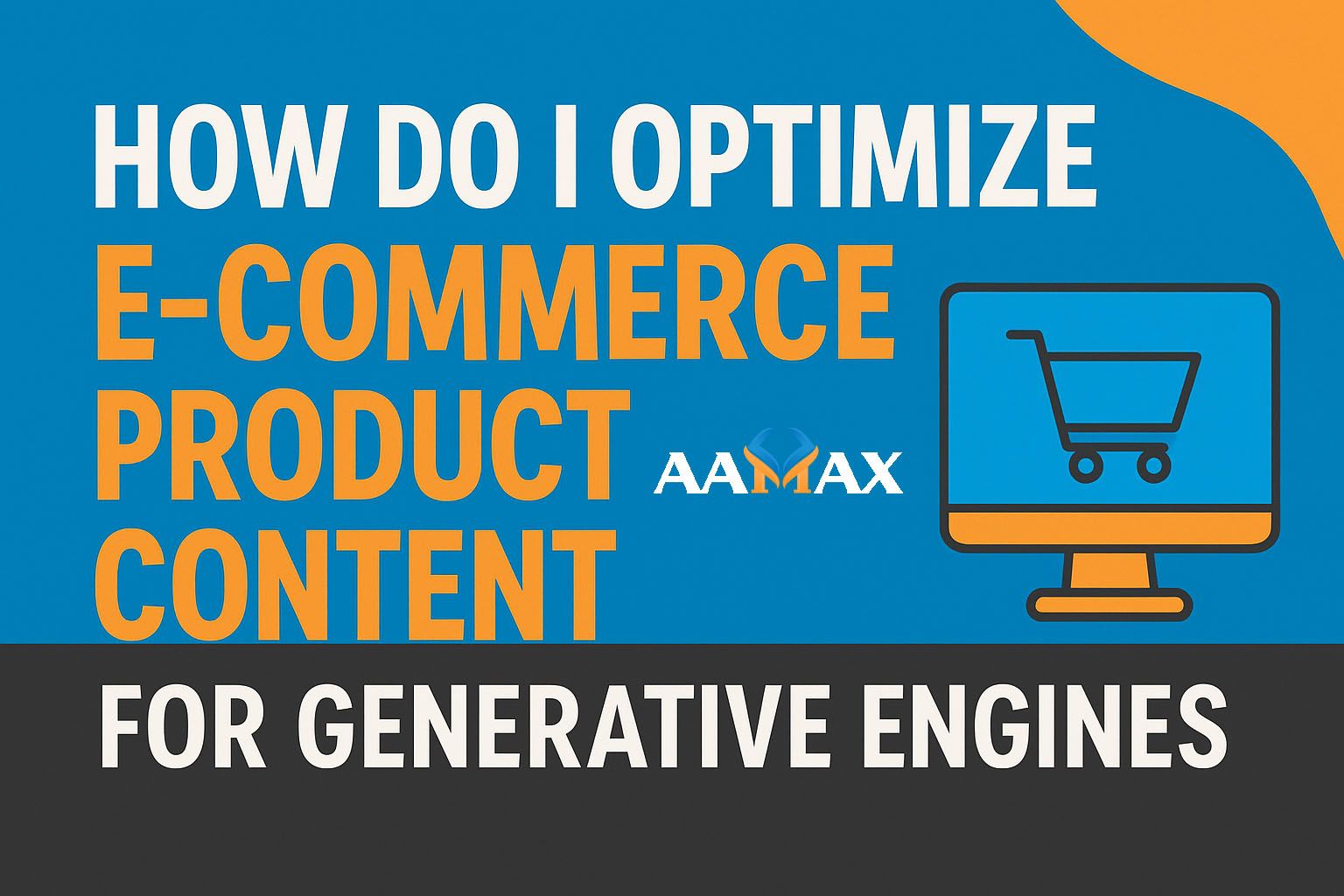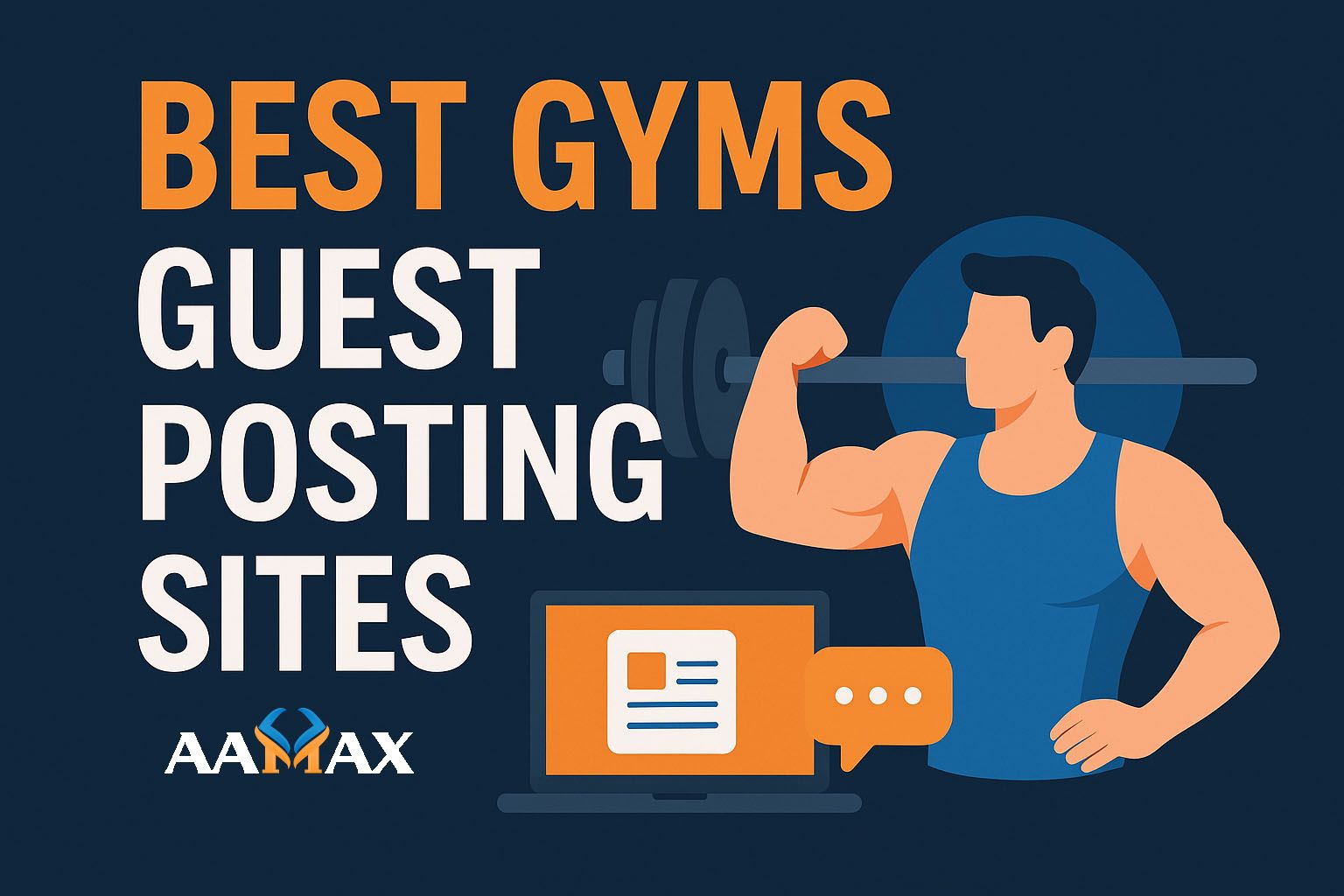
How Do I Optimize E-Commerce Product Content for Generative Engines
In the evolving world of digital marketing, Generative AI engines such as ChatGPT, Google’s Gemini, and other AI-powered assistants are transforming how consumers search, shop, and interact with brands. For e-commerce businesses, this shift represents both a challenge and an opportunity. The traditional approach of optimizing solely for search engines like Google is no longer enough — now, optimizing for Generative Engine Optimization (GEO) is essential to remain visible and competitive.
In this detailed guide, we’ll explore how you can optimize your e-commerce product content for generative engines, ensuring your brand and products remain discoverable in the age of AI-driven search and recommendation systems.
Understanding Generative Engines and Their Role in E-Commerce
Before diving into strategies, it’s important to understand what Generative Engines are. Unlike traditional search engines that retrieve a list of links based on keywords, generative engines create new content or answers by synthesizing information from multiple sources.
For example:
- A user may ask: “What are the best running shoes for flat feet under $100?”
Instead of showing a list of links, a generative engine might produce a concise paragraph mentioning a few top-rated shoes, their features, and even where to buy them.
This means your e-commerce product pages need to be structured, informative, and AI-friendly, so that generative models can easily extract and present your product information.
Why Optimizing for Generative Engines Matters
Generative engines are changing how consumers make purchasing decisions. According to recent studies, AI-assisted product discovery is growing rapidly, with many users relying on conversational tools instead of traditional search engines.
Here’s why optimization matters:
- Visibility: If your product data isn’t structured for AI interpretation, it won’t appear in generative results.
- Authority: Well-optimized content signals reliability, which can increase inclusion in AI-generated summaries or recommendations.
- Conversion: When your product appears in AI responses, users are more likely to click and purchase, shortening the buying journey.
Key Elements of Generative Engine Optimization (GEO)
Optimizing for generative engines combines elements of SEO, structured data, and high-quality content strategy. Below are the key components to focus on.
1. High-Quality, Descriptive Product Content
Generative engines prioritize clarity and completeness. Each product page should include:
- Detailed product descriptions (at least 300–500 words) covering materials, use cases, benefits, and differentiators.
- Feature-rich language that mirrors customer search intent.
- Conversational phrasing that aligns with how users ask questions (e.g., “best shoes for marathon runners” instead of just “running shoes”).
- Relevant FAQs that answer user questions directly.
Tip: Write naturally as if explaining your product to a friend — this mirrors the tone AI models are trained to understand and generate.
2. Use Structured Data (Schema Markup)
Generative engines rely heavily on structured data to interpret and contextualize product information. Implement schema markup on your product pages, including:
Productschema withname,description,brand,image, andoffersReviewandAggregateRatingschemasBreadcrumbListfor navigation structureFAQschema for product-related questions
This structured information enables AI engines to quickly understand your product attributes, pricing, and reviews, increasing your chance of being mentioned in AI-generated shopping recommendations.
3. Focus on E-E-A-T: Experience, Expertise, Authoritativeness, Trustworthiness
Google and other AI-driven models are now trained to prioritize content that demonstrates E-E-A-T (Experience, Expertise, Authoritativeness, and Trustworthiness). Here’s how to apply it to your e-commerce site:
- Experience: Include user-generated content, real photos, and detailed product usage scenarios.
- Expertise: Offer guides, blog posts, or videos explaining product features or comparisons.
- Authoritativeness: Link to credible sources or partnerships that enhance your brand’s credibility.
- Trustworthiness: Use verified reviews, testimonials, and secure checkout options.
These signals make your content more likely to be selected and summarized by generative systems.
4. Optimize for Conversational Search Queries
Generative engines are built around natural language processing (NLP). They understand intent-based, conversational queries rather than short keyword phrases.
To align your content:
- Incorporate long-tail, question-based keywords (e.g., “What’s the best laptop for students under $800?”).
- Use H2 and H3 subheadings phrased as user questions.
- Answer directly and succinctly within your content.
- Include FAQs and comparison sections.
By structuring your content to answer natural queries, your products can appear in AI-driven responses and summaries.
5. Enhance Visual and Multimedia Content
Generative models increasingly use multimodal data (text, images, and videos). Optimizing your visual content ensures your products can be identified and referenced correctly.
- Use high-quality images with descriptive alt text (mention product name, color, and usage).
- Include short product videos highlighting unique features.
- Add image captions that describe context — not just aesthetics.
These steps help AI systems understand your product’s visual details, improving visibility in AI-generated image-based recommendations.
6. Maintain Consistent Product Information Across Platforms
Generative engines aggregate data from multiple sources, including your website, social media, and marketplaces like Amazon or Shopify. Inconsistent product details can confuse AI models, lowering your visibility.
Ensure that:
- Titles, prices, and specs are uniform across all platforms.
- Product descriptions and keywords remain consistent.
- Outdated listings are promptly updated or removed.
Consistency signals reliability, boosting your chances of inclusion in generative summaries.
7. Build AI-Readable Internal Linking Structures
A well-organized internal linking system helps AI models navigate and understand your product hierarchy.
- Link from category pages to individual product pages using descriptive anchor text.
- Add contextual links between related products (e.g., accessories or upgrades).
- Use breadcrumb navigation to show logical structure.
This improves crawlability, helps AI understand relationships between products, and strengthens topical authority.
8. Encourage User Reviews and AI-Friendly Testimonials
Generative engines value authentic customer feedback. Reviews act as a form of structured, user-generated content that enhances your product’s visibility.
- Encourage verified buyers to leave reviews.
- Use schema markup to tag review content.
- Include detailed feedback sections with real user experiences.
These reviews provide natural language input that AI systems interpret when summarizing or recommending products.
9. Leverage Content Hubs and Buying Guides
Instead of optimizing only individual product pages, create content clusters that connect your products to broader topics.
For example:
- Buying guides: “Best Headphones for Gamers in 2025”
- Comparison pages: “iPhone 15 vs. Samsung Galaxy S24 — Which Should You Buy?”
- How-to blogs: “How to Choose the Right Mattress Size for Your Room”
Generative engines love context-rich ecosystems, and linking these guides back to product pages helps establish authority and improves AI inclusion.
10. Optimize for Multilingual and Local AI Search
Generative engines like Google’s Gemini and ChatGPT are multilingual, offering localized recommendations. If you sell globally:
- Translate your product descriptions accurately.
- Use hreflang tags to specify regional targeting.
- Incorporate local pricing and currency options.
Localization makes your content more accessible to users worldwide — and more recognizable to AI systems that factor in regional context.
11. Strengthen Technical SEO for AI Discovery
Technical SEO remains the foundation of visibility — even in the age of generative engines. Focus on:
- Fast load times (AI engines deprioritize slow sites)
- Mobile-first design
- XML sitemaps and structured data
- Secure HTTPS connections
Generative systems favor reliable, accessible websites when retrieving information. A technically optimized site signals trust and enhances discoverability.
Measuring Success in Generative Optimization
Unlike traditional SEO, tracking performance in generative optimization requires new metrics. Here’s what to monitor:
- AI Visibility: Check if your brand or products appear in AI-generated summaries or conversational results.
- Engagement Metrics: Measure click-through rates from AI-driven platforms or traffic sources.
- Structured Data Validation: Regularly test your schema markup using Google’s Rich Results Test.
- Conversion Data: Track whether visitors from generative platforms convert at higher rates.
Combining traditional analytics with new AI monitoring tools will help gauge the effectiveness of your optimization strategy.
Future-Proofing Your E-Commerce Store for AI Evolution
The rise of generative search is only the beginning. Future AI systems will become more personalized, visual, and context-aware. E-commerce brands must continuously adapt by:
- Updating product data regularly.
- Testing new content formats (interactive product demos, AR views, etc.).
- Embracing AI-powered content generation tools for scale.
- Integrating conversational AI chatbots for personalized shopping.
By proactively optimizing for AI-driven discovery, you can ensure your store remains visible, competitive, and profitable.
Partner With Experts to Optimize for Generative Engines
Optimizing for generative engines requires a combination of technical SEO, content strategy, and AI-readiness — and that’s where professional help can make a difference.
If you’re looking for a reliable partner to optimize your e-commerce site for the AI-driven future, consider hiring AAMAX. AAMAX is a full-service digital marketing company offering Web Development, Digital Marketing, and SEO Services. Their expert team can help you structure your content, implement schema markup, and design data-driven strategies that make your products stand out in both traditional and generative search results.
Conclusion
Generative engines are redefining e-commerce search and content optimization. By combining structured data, conversational content, E-E-A-T principles, and multimedia optimization, brands can ensure that their product listings are easily discoverable and accurately represented in AI-generated recommendations.
The future of e-commerce lies in visibility through intelligence — and those who adapt early will dominate the generative search landscape. Start optimizing today, and make your e-commerce content not just searchable, but AI-discoverable.







